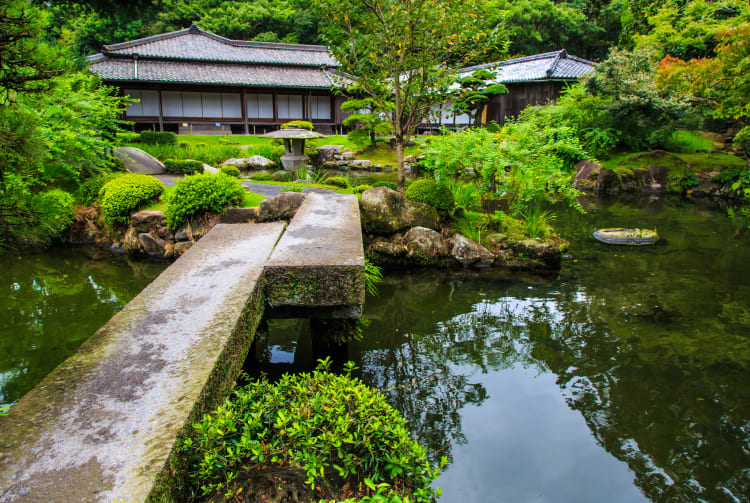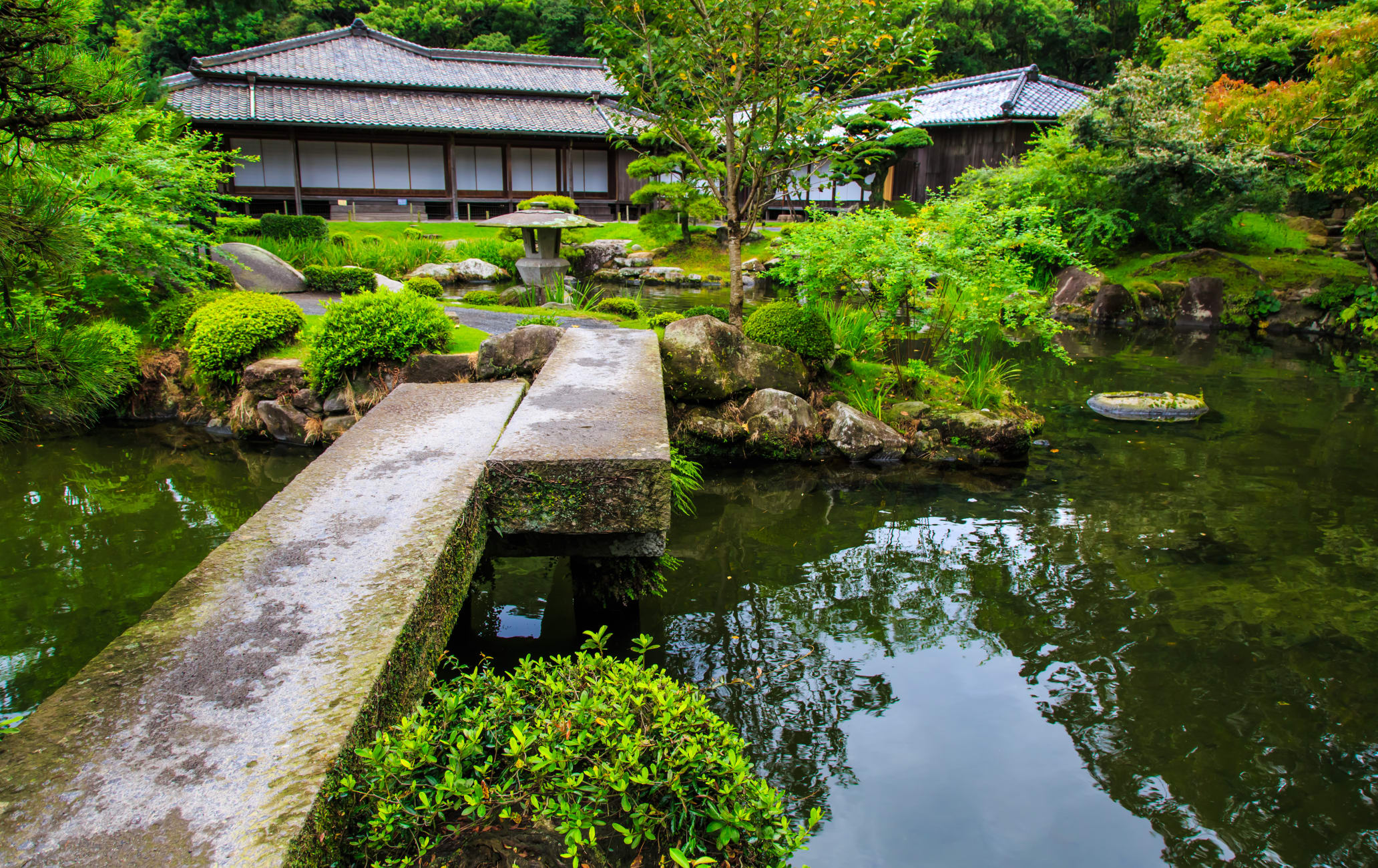Stately home and gardens of the Shimazu clan
Set against the backdrop of Kinko Bay and the active volcano Sakurajima , Sengan-en is one Japan's finest examples of a feudal lord's garden and is a must-see destination in Kagoshima . Set aside a day to leisurely explore the gardens, on-site attractions, and excellent dining options.
Don't Miss
- Stunning Japanese gardens built in 1658
- Spectacular views of the active Sakurajima volcano
- An eclectic mix of cultures at the old residence in the center of the gardens

Sakurajima as seen from Sengan-en
How to Get There
Sengan-en is located on the coast just north of Kagoshima City and can be easily combined with other nearby attractions.
Sengan-en can be reached from Kagoshima Chuo station in 30 minutes via the Kagoshima City View Bus, or the Machi Meguri Bus. There are also regular buses operating from Kagoshima station.
Beautiful gardens, borrowed scenery
Built in 1658 as one of the residences of the Shimazu clan that ruled over this area, the garden's most striking feature is the active Sakurajima volcano and Kagoshima Bay that are framed in the background.

Sakurajima snow-covered in winter
The gardens cover over 12 acres and include serene ponds, gently bubbling streams, mysterious shrines, traditional tea rooms, a bamboo grove, and a mountain hiking trail. A walk to the top of the trail takes about 30 minutes one way, but it is certainly worth it for the breathtaking view from the top.


Stop in at the chic Matcha Cafe tearoom after exploring the grounds
Follow in the footsteps of a feudal lord
The house at the center of the garden is a fascinating mix of Japanese, Chinese and Western influences, showing the international tastes of the Shimazu clan.

Hiding the nails that join the beams and pillars together, decorative kugi-kakushi in the shape of bats adorn the hallways. Bats were a lucky symbol in China because the Chinese word for bat sounds like the word for good luck.
There are twelve different types of these kinds of decorations around the residence, showing the playful attention to detail that went into building this magnificent dwelling.


The gate and inner gardens of the residence
Walking through the winding corridors and spacious tatami rooms give you a real sense of how a feudal lord would have lived.
The chandeliers and western dinner service in the main reception room hark back to an era when Japan was beginning to open itself to the world in the 19th century. Indeed the house was visited by royalty such as Nicholas II of Russia, and Edward VIII of the UK, a testament to the influence of the Shimazu family.
Kagoshima delicacies
Be sure not to miss out on some of Kagoshima's local cuisine served up at Sengan-en's flagship restaurant Ohkatei. Some highlights include locally caught sea bream and kurobuta pork. It's easy to imagine how a feudal lord felt looking over the bay at Sakurajima while enjoying sumptuous local delicacies.


For those looking for a lighter snack, there is the famous local sweet treat known as jambo-mochi, two lightly toasted rice cakes skewered on two sticks and glazed with sweet soy or miso sauce. The two sticks are said to represent the two swords traditionally carried by the samurai.


Industrial heritage
Japan was the only country in Asia in the 1800s to participate in the industrial revolution, and you can learn about it at the Shoko Shuseikan Museum just outside Sengan-en.
Follow the course of the Shimazu family over 800 years and see how the international relations they forged led to the development of industrialization in modern Japan. The museum is housed in Japan's oldest remaining factory, built in 1865.

The Shoko Shuseikan Museum
Traditional craftsmanship
Colorful Satsuma Kiriko cut glass was first created in Kagoshima during the Edo period, at the time of the Shuseikan modernization project. Satsuma Kiriko is made by layering thick colored glass over transparent glass and then cutting patterns into the thick layer of colored glass to reveal the transparent glass below.

The entire process is done entirely by hand, and the skilled craftsmen can be seen at work at the Shimazu Satsuma Kiriko Glassworks next to Sengan-en.


World Heritage Site
The Shoko Shuseikan Museum and Sengan-en were recognized as a UNESCO World Cultural Heritage Site related to Japan's Meiji Industrial Revolution in 2015. Both sites provide a wonderful opportunity to see a unique combination of beautiful Edo period gardens nicely contrasted with the modernization of the Meiji period and beyond.


























































